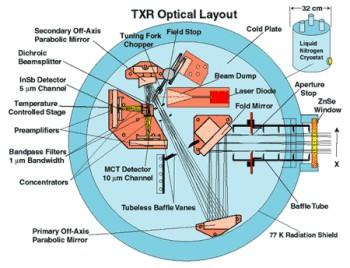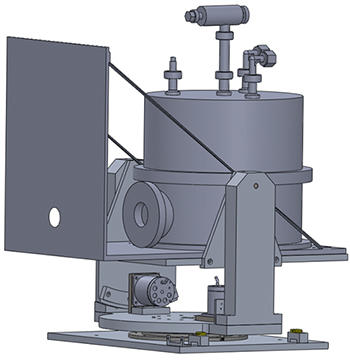Thermal infrared transfer radiometer (TXR)

The NIST Thermal-infrared Transfer Radiometer (TXR) is used for measuring the radiance temperature in the thermal-infrared spectral region of extended-area blackbody sources, over the range of about 190 K to 350 K, either in vacuum chambers or ambient condition laboratories. The TXR is a portable radiometer with two channels, one at 5 µm and the other at 10 µm. It uses a photovoltaic InSb detector for the 5-µm channel, and a photovoltaic mercury cadmium telluride (MCT) detector for the 10-µm channel. The detectors, filters, and reflective optics are built into a liquid-nitrogen cryostat, and the entire radiometer is vacuum/cryogenic compatible and designed to be deployed inside of the typical space-simulating vacuum chambers used for space-flight instrument calibrations. The TXR has a self-contained vacuum jacket and liquid-nitrogen reservoir, and so can be also used in a typical laboratory environment with the outer case of the cryostat at ambient pressure and room temperature. This allows it to be characterized and calibrated by a full array of infrared facilities in the Sensor Science Division at NIST, much of it in an ambient laboratory environment. The standard uncertainty for radiance measurements using the TXR is of the order of 0.2 % at 10 µm, which corresponds to about 60 mK in radiance temperature near 300 K, with absolute calibration traceable to the kelvin through a NIST water-bath blackbody.
The TXR has so far been successfully deployed 13 different times (between 1999 and 2015) to several different aerospace calibration facilities, where it performed in-situ measurements of various sources in a space-simulating chambers. These measurements were used to verify the infrared radiance scales in currently used by several NASA, NOAA, DOE, and DOD satellite programs. The TXR is maintained at NIST when it is not on a deployment.
Specifications/Capabilities


